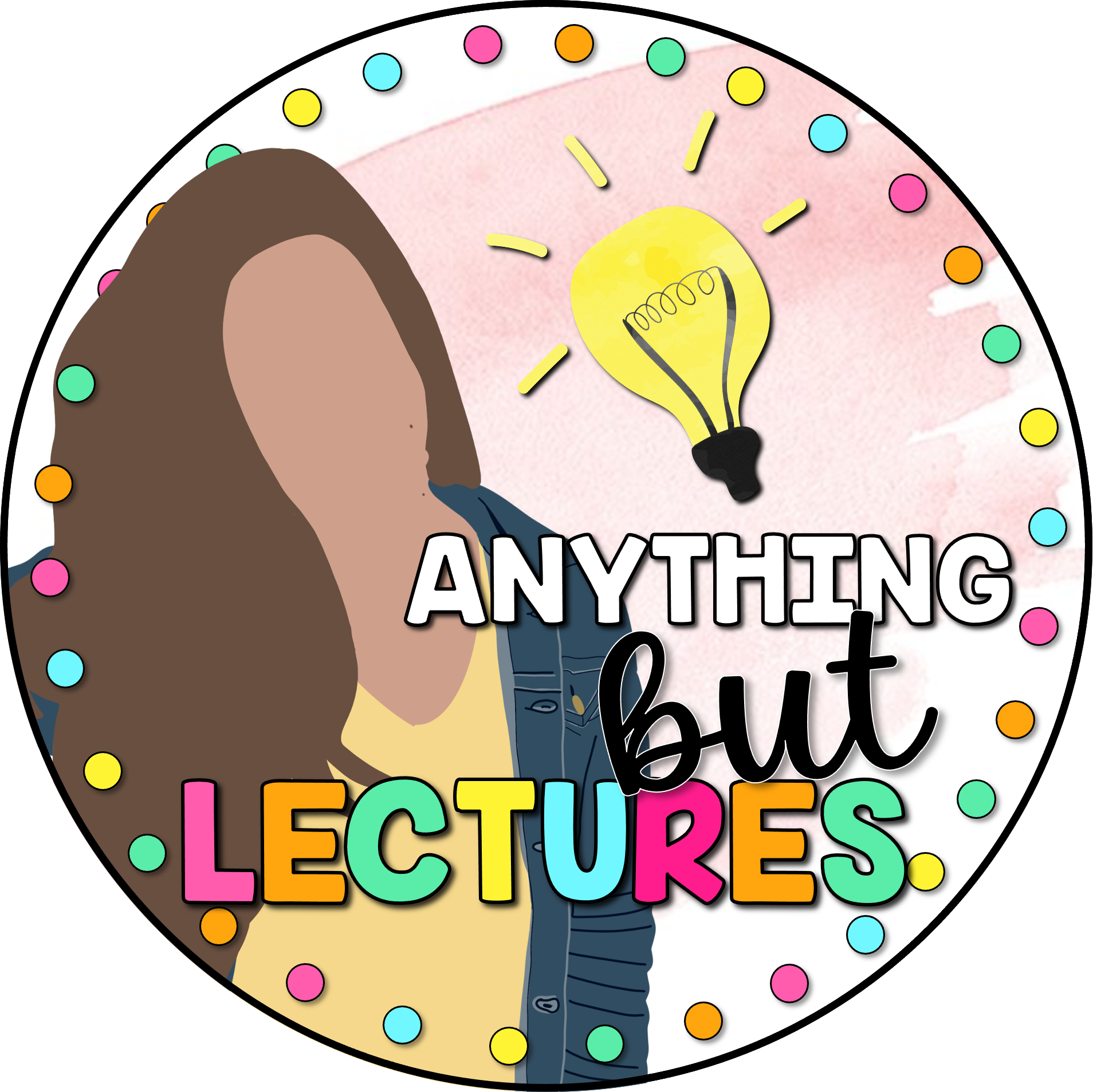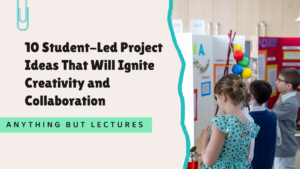Have you ever stared at your lesson plan template and wondered, “what does an outstanding lesson look like?”. Or maybe you are getting ready to be observed by your administrator and want to nail your lesson. Today I’m sharing the structure of a really great lesson in an elementary ELA classroom. I’ll share the more traditional structure of a lesson, and what’s becoming more widely used in modern classrooms.
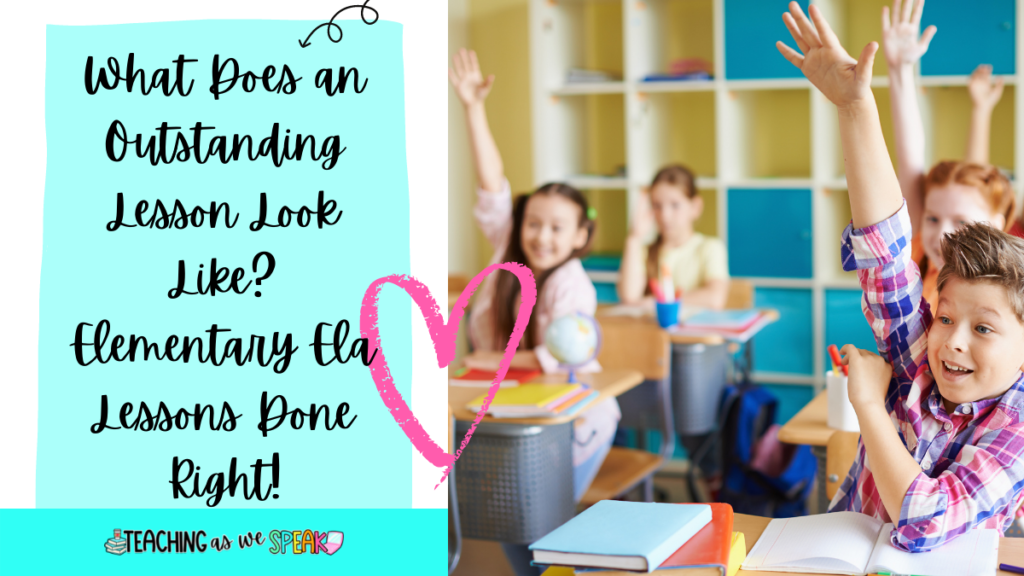
Are you an elementary ELA teacher who’s teaching in Quebec? Click here to download the free QEP Competencies Handbook. It provides an easy-to-use format so you know EXACTLY what you have to teach your students.
What Did a Lesson Look Like in the Past?
Lessons used to be heavily focused on the teacher teaching and then the student doing. It would go something like this:
- The teacher teaches/models or thinks aloud
- Then the teacher practices with the students’ input
- The students practice individually, in pairs or in groups
- Then everyone comes together to correct and discuss.
See the diagram below
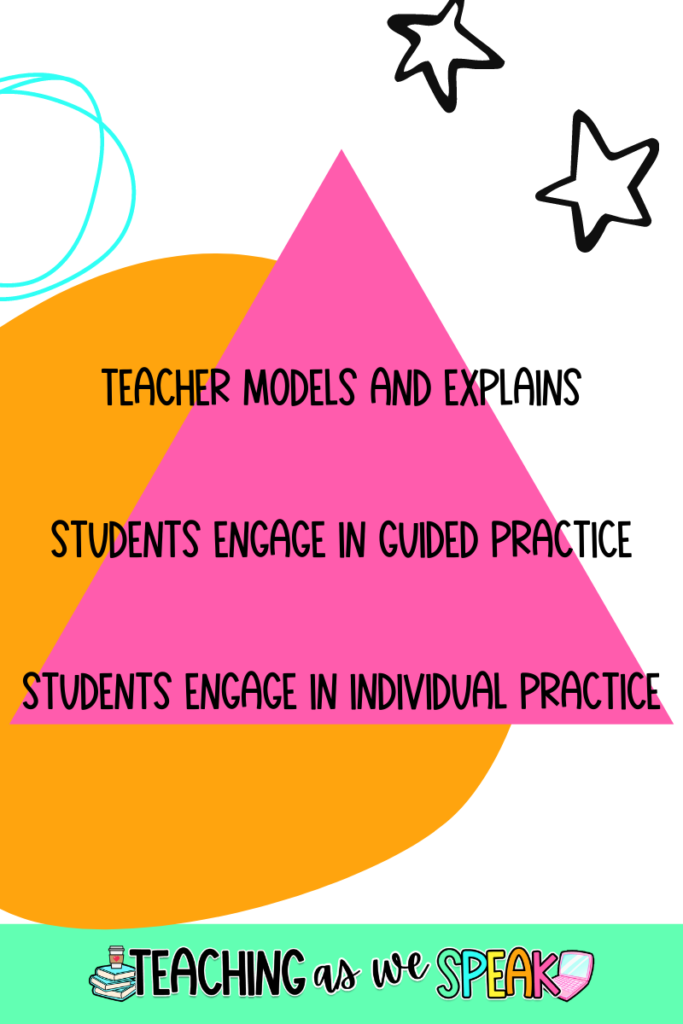
This can be a very engaging strategy if done right. Most teachers tend to like this strategy because they are not releasing control to the students. At least, not until they feel the students understand the skill or strategy being taught. (I am so guilty of this need for control!)
I’m not saying that this type of lesson, one with the teacher scaffolding and allowing the gradual release of control to their students, is not used today. One could argue it is still the most widely used method by teachers. However, this used to be the ONLY way to teach.
Nowadays, I would argue that there are so many other strategies to teach students. Strategies that are rich with content and allow for a more inquiry-based way to teach that feed into students’ curiosity for the world around them.
What Does an Outstanding Lesson Look Like Today?
Nowadays, lessons are organized in a way that has the teachers taking a backseat and have them acting as facilitators. Lessons like these take on the following structure:
Teachers pique their students’ interest in a topic and see what students already know (pre-assessment). Check out my recent blog post about assessment types.
Students explore a skill or topic using resources the teacher has prepared (but has not explained or taught). During this stage, students are building their own understanding of a topic
Then, students explain their understanding in a whole-class discussion or in a teacher-student conference.
Afterwards, the teacher extends the students’ knowledge by making connections, elaborating or addressing misconceptions.
See the image below
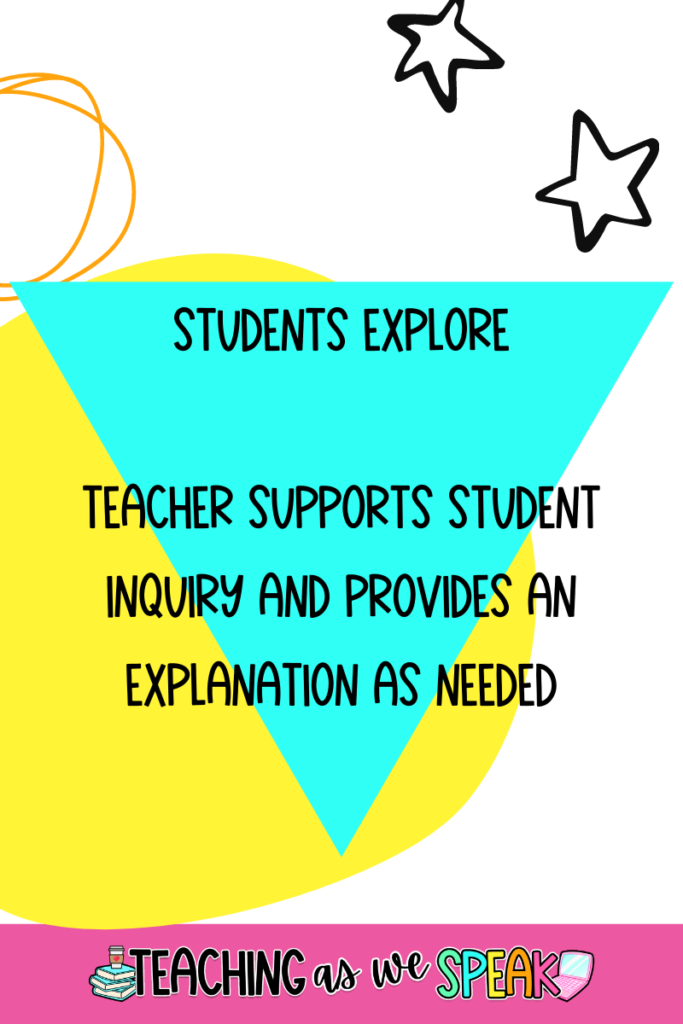
What do you notice about the difference between this strategy and the one above? Notice how in the first example, the teachers’ role is the biggest at the beginning? Whereas in this type of lesson, the teacher only participates and teaches at the end of the lesson.
This type of lesson is a very inquiry-based approach. It has the students take the lead, with the teacher’s support. The learning is shaped by the students’ questions and ideas.
Download your free copy of the QEP Competencies Handbook now! Click here to learn more!
What are you preparing for the students at the beginning of the lesson?
As stated above, students are spending time at the beginning of the lesson exploring. But what are they exploring, you ask?
If I want my students to explore a specific topic, such as life in the 1950s, I will have students explore props that they may have never seen before. If I want them to explore a grammar rule, such as end punctuation, I will have different examples with sentences that use periods, exclamations marks, and question marks. Students would then figure out a rule to use for each based on the examples given.
Other examples include:
- Photographs of people/places/things
- Advertisements
- Short video clips
- Costumes
- Different kinds of art
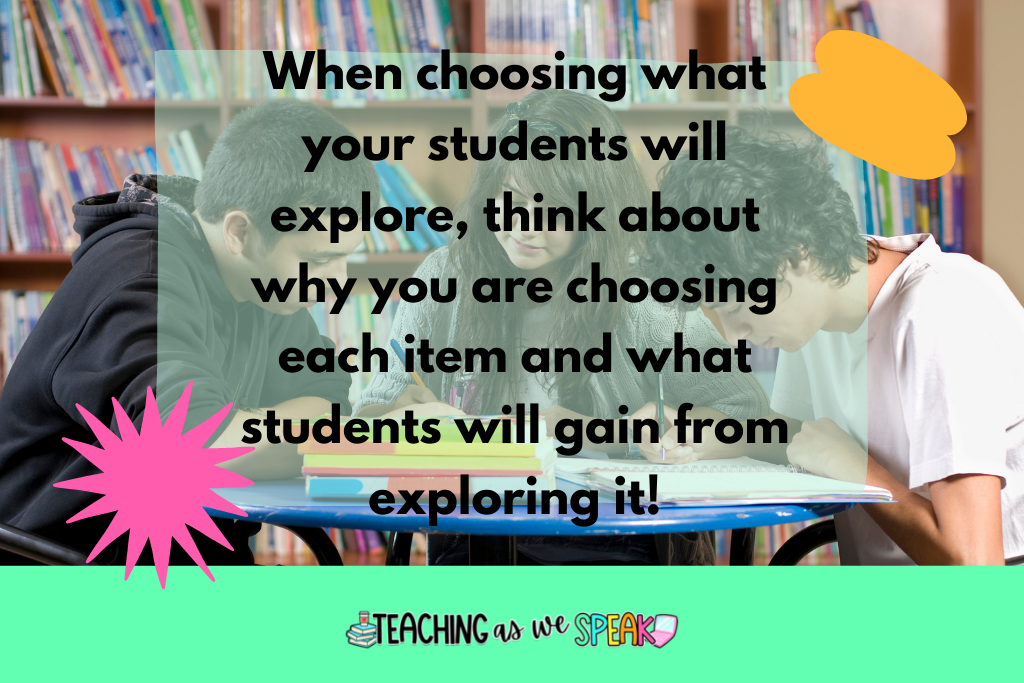
What does an outstanding lesson look like-Questions to ask students?
When I started structuring my lessons this way, I assumed the students would finish the exploratory part of the lesson with tons of ideas and questions. In reality, I would open the floor and hear nothing but crickets.
Even if you have prepared the coolest props, or photos, etc… chances are you’re going to have to begin the discussion with some questions or prompts. The most important part of your role as a guide or facilitator is asking your students good questions or giving them prompts that will have them itching to share their thoughts and feelings with you!
Some examples of questions/prompts include:
- Did anything stand out to you?
- Did you find any similarities or differences?
- Was there a pattern in what you saw?
- Did anything you saw make you feel a certain way?
- I noticed________. Did anyone else notice that?
- Did your opinion change after doing this activity?
- If a detective were to walk in and see all of these_____, what would they have seen or noticed?

These sometimes come in the form of an essential question for your unit. Check out a recent blog post where I talk more about essential questions!
Also, check out my essential questions resource by clicking here!
Final Thoughts
Have any questions? Have a great example of an inquiry-based lesson? I would love to hear from you! Comment down below!
Be sure to download my free QEP Competencies Handbook by clicking here!
